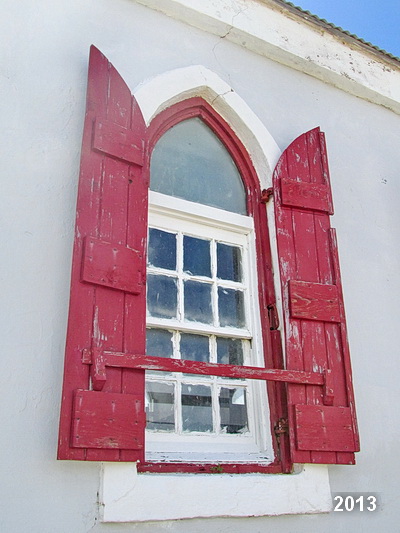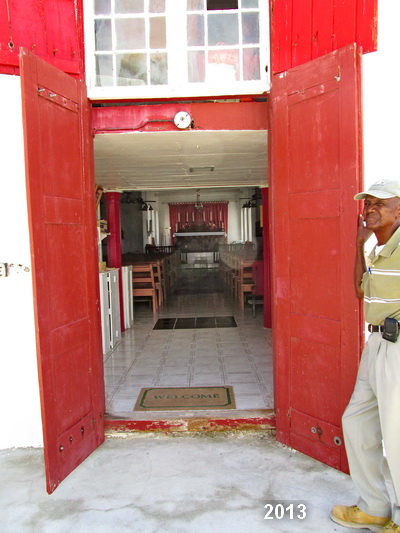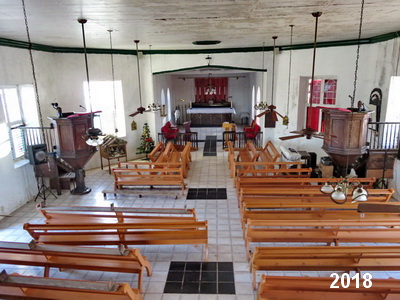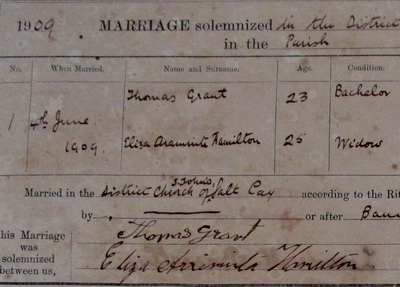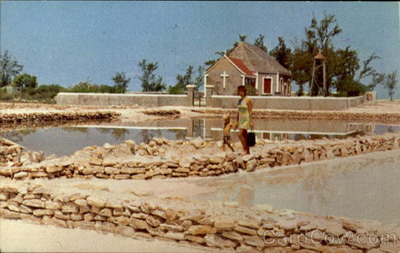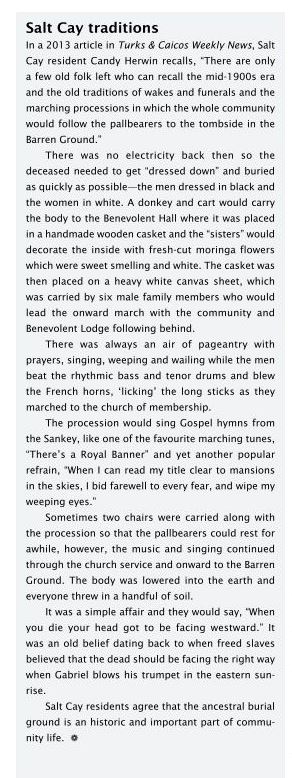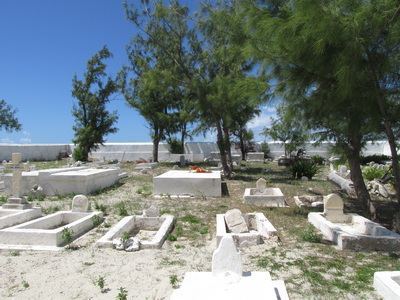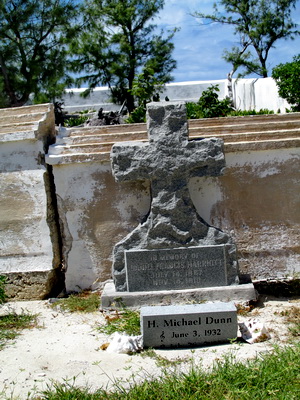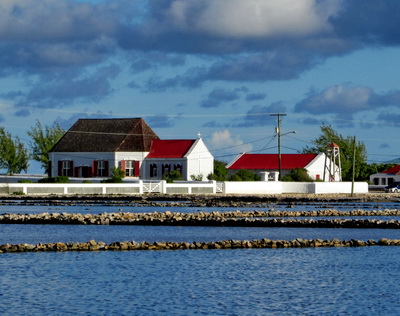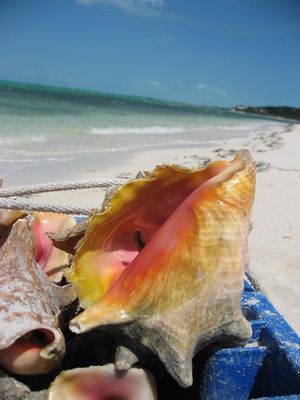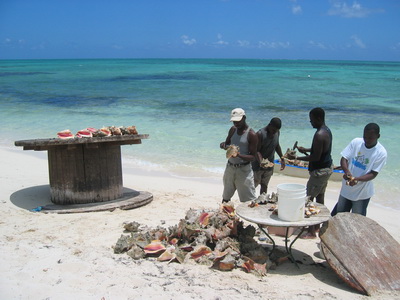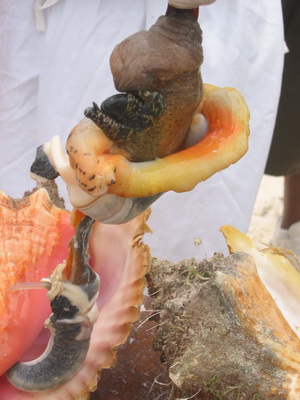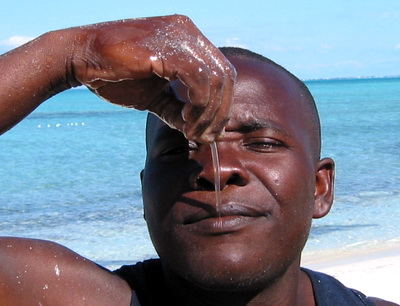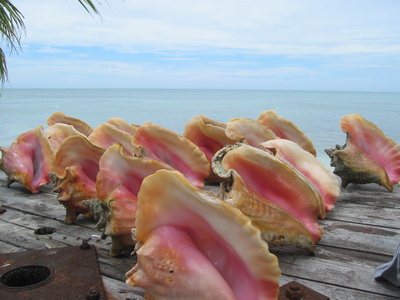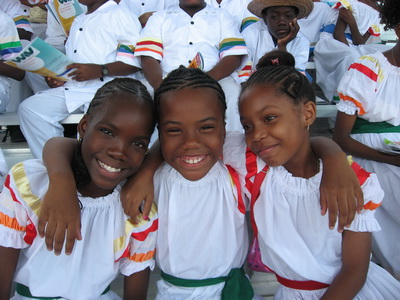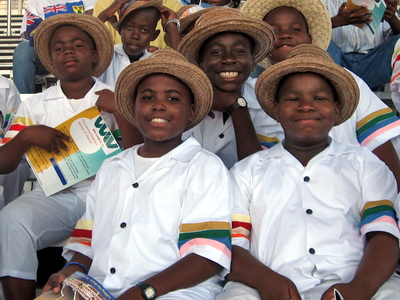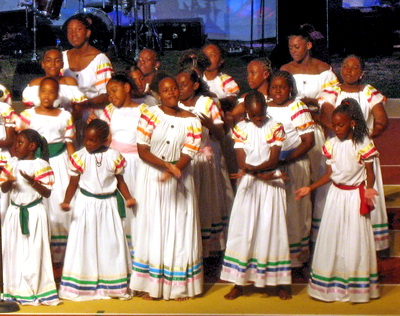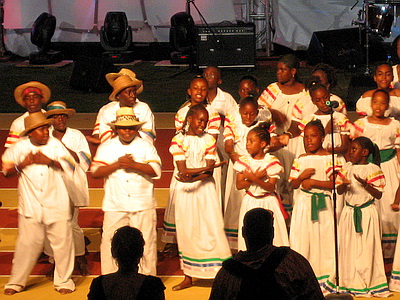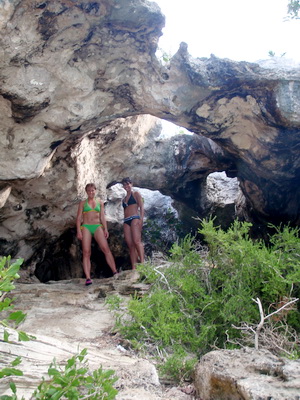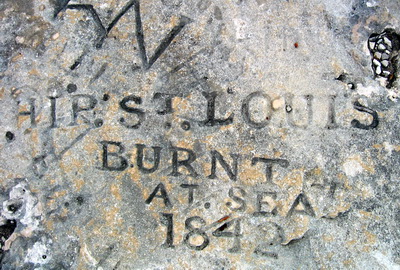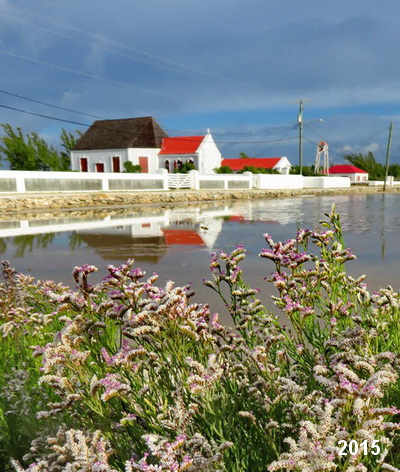
St. John’s is a beautiful old Anglican church also referred to as St. John’s the Divine and was built in the early 1800’s. We wandered through the graveyard which stretches to an old seawall. Mr. Holton Dickenson, the chatechist and our guide, opened up the old doors which allowed for the sea breezes to flow through up to the altar.
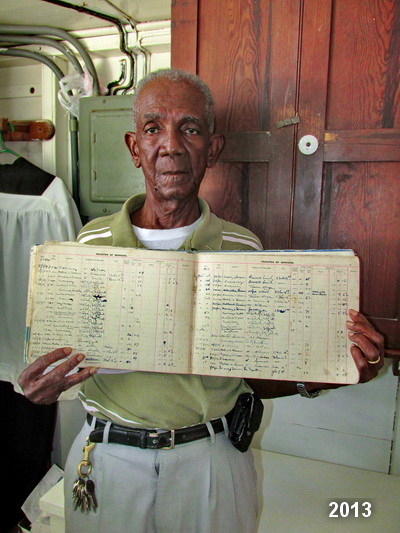
Mr. Dickenson holds the old Register of Services showing numbers of worshippers and amounts collected.
Mr. Holton Dickenson showed us some old records that the church still keeps. These old registers need to be photographed page by page or they will eventually deteriorate and be lost for the future generations of Salt Cay residents.

Names of Officiants such as Astwood, Morgan, Tatem in the Register of Services

The graveyard and church doors taken from the old sea wall in 2018 after Hurricane Irma devastated our islands.
Neil (Daniel Francis Harriot) was the resident Harriot at the White House until his death in 1910. He is buried at St. John’s Church in the plot he set forth in his will. My husband and I were fortunate to meet and talk with Michael Dunn when he visited us at Harbour Club Villas with a friend years ago. I remember he was looking for a piano that he could play and at that time, I believe there were only two or possibly three on island. A friend of ours had one of them.
The bell tower outside of the St. John’s Anglican Church was usually rung to announce to everyone that it was time to come to church. Every Sunday dressed in their Sunday best, the faithful would listen to the bell tolling and head to church in time for Sunday worship. There are three of these bells still left on Salt Cay.
St. John’s church is a beautiful start to stepping back and into the history of Salt Cay……… a tranquil and peaceful place that speaks of an era of days gone by. The population is dwindling as the ocean breeze gently brushes the gravestones. Time to reflect on the history of this magical island that is steeped in history. We are the keepers of years past and need to do everything we can to preserve, nourish and protect the history and stories of Salt Cay and our national heritage. Thankfully we have concerned and caring people that are doing their utmost to document and keep Salt Cay’s history alive for future generations. Take a bow….you know who you are!
Salt Cay is a jewel in the sun.
Marta

